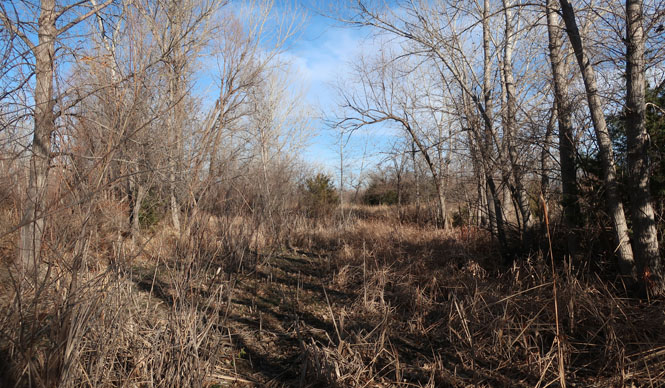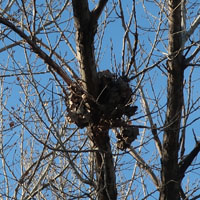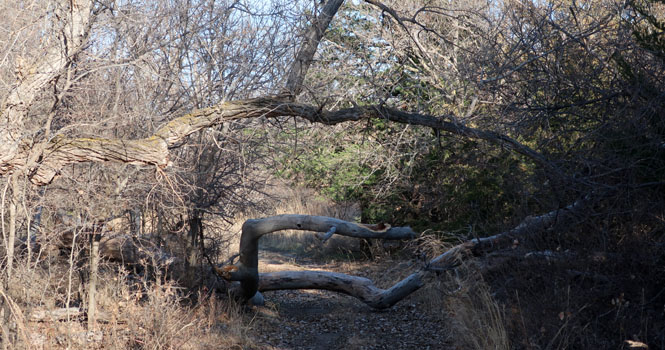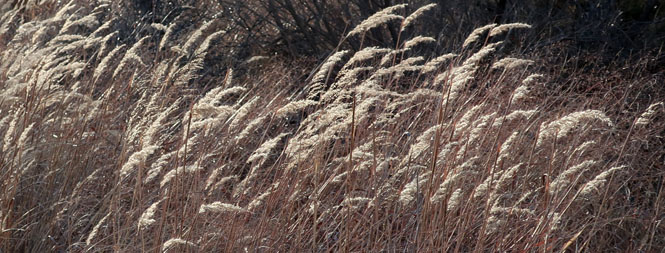November 18, 2020

The Arkansas River starts in the Rocky Mountains and eventually meets the Mississippi River in southeastern Arkansas (where there are no nearby towns, as the area is a gigantic flood zone). You might expect it to start small and end large; that's true, but as it flows through Kansas, you'll find the river to be virtually nonexistent (at least above ground).
 Kansas
Kansas
This is the Arkansas River at around the 99th meridian (in the above map, it's where the word "Arkansas" crosses the river). Traditionally, the 100th meridian marks "the dry west", but we're close enough.
I'm standing in the middle of the central channel of the river. Yes; the ground is a bit soft (and there's a musty smell), but there's no obvious water. At any rate, there is no water, today.
On either side of the river bed, you'll find not much other than grass. I'm sure that some years, this will all be in wheat, but it doesn't look as if that's been the case for a long time


Trees have moved into the old channel. It's a risk for them, as they couldn't survive long if the water were to return for many years in a row.
There's an old road that parallels the channel. Likely, hunters have used this route in the past, but there are enough dead trees that will need to be moved that I don't think it's been used for a good while.
I heard a great crashing noise and was prepared to take a photo of a great buck (which I did see, later) that might come charging out of the brush. Then, this guy shows. Armadillos are not naturally stealthy animals.
Effectively, the Arkansas River provides a narrow bit of an untouched wildlife refuge through the entirety of Kansas. Even if there's not any water to be found, it's a nice place for a hike.







